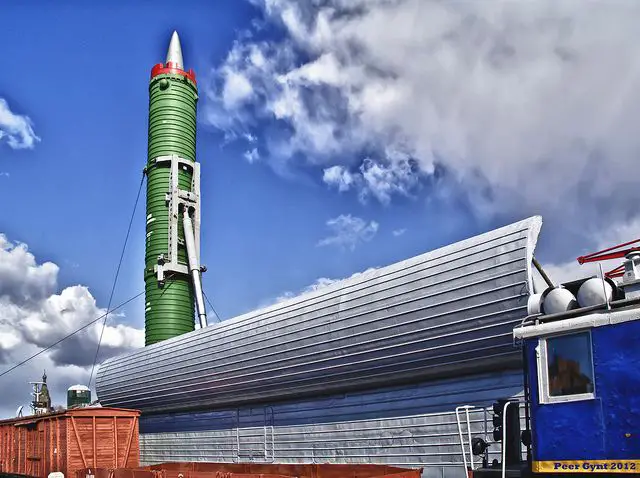Russia
will restart production of railway-based intercontinental ballistic missiles
(ICBM), with prototypes to be deployed by 2020, a senior Russian defense
industry official said on Wednesday, December 26, 2012. Work has already
begun on the prototypes, which will utilize exclusively domestically-made
components, the official told RIA Novosti on condition of anonymity.
|
The new missiles will be
half the weight of their decommissioned Soviet analogues, allowing them
to fit into one railcar, the official added.
The Soviet military deployed its first missile train in 1987, and had
12 of them by 1991. But by 2005 they had all been destroyed under the
START II arms reduction treaty with the United States.
However, the treaty’s 2010 replacement, New START, does not prohibit
the development of railway-based ICBMs.
The original railway-based system involved SS-24 Scalpel missiles that
weighed 104 tons, required three locomotives to move, and were so heavy
that they damaged railroad tracks. It was thought that missiles launched
from the moving trains were harder to track than stationary launches.
However, prominent Russian military expert Alexander Konovalov said that
this apparent return to the cumbersome Soviet technology, even in revamped
form, was a “bad idea.”
The return to missile trains is an apparent response to US plans to position
elements of its missile defense system in Eastern Europe, said Konovalov,
the president of the Institute for Strategic Assessment, a Moscow-based
private think-tank.
Russia has claimed the US missile shield will affect its launches, but
Konovalov said that the threat is exaggerated. He added that the missile
trains were outdated technology.
“We’re better off developing telecoms systems, unmanned drones
and precision weapons, not these monsters,” Konovalov told RIA Novosti,
speaking about the missile trains.
|



























